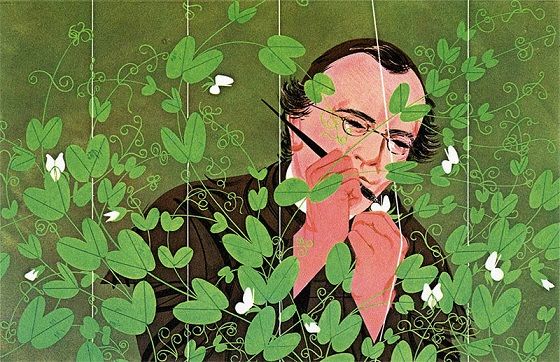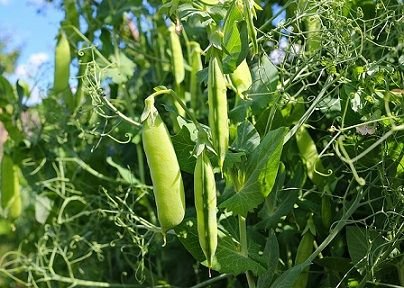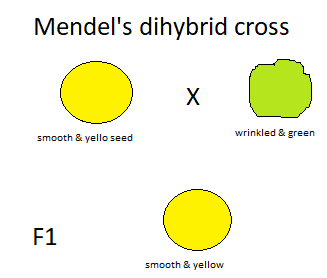How traits are inherited across generations #3

Sometimes, trying to understand the pattern of trait inheritance can be a bit daunting, especially to a layman. One minute, it looks like the pattern seems clear and well understood. The next minute, it goes back to being fuzzy. Have you ever seen some kids next door that look like both their parents? On one side, they look like their mum, on the other, like their dad. Perhaps some of you readers are a product of such character mix.
In order to fully understand this particular episode, I will implore my readers to read through the two previous episodes on this topic which can be found here and here.
Now, let us consider a couple in which the man is tall, brown eye colour and dark in complexion while the woman is of average height, blue eye colour and light in complexion. They gave birth to two kids, the first is dark skin, blue eye and of tall height while the second is light skin, brown eye and of average height. This means the first kid got his/her dark skin and tall height from the father and the blue eye from the mother while the second kid got his/her light skin and average height from the mother and brown eye from the father.
The scenario above is simply telling us one thing, that gene for each trait is inherited independently. The gene for skin colour is inherited independently from the gene for eye colour while both are also inherited independently of the gene for tallness. This assertion has been demonstrated by Mendel in one of his experiment using the popular pea plant. Why was he obsessed with this pea plant? I suppose he used the pea plant mainly because they are very easy to cultivate and have a short life cycle from germination to fruiting. Furthermore, the flowers of the pea plants are hermaphroditic making self-pollinating the pea plants an easy task. So, what did Mendel do? He performed a breeding experiment taking two traits into cognizance simultaneously - the shape and colour of the seeds of the pea plant. He took a pea plant that breeds true for smooth and yellow seededness and crossed it with the one the breeds true for wrinkled and green seededness. As expected from the law of segregation, all the F1 (first filial generation) plants produced smooth and yellow seeds, meaning the smoothness is dominant over wrinkledness and yellowness is dominant over greenness. The first generation plants were then allowed to self-mate to produce second-generation seeds. The result from the first generation selfing revealed a similar trend of segregation of genes or alleles. The offsprings appeared in the ratio 9:3:3:1 phenotypes along with the seed shape and colour. The outcome of the dihybrid cross can be predicted using a punnet square to show the outcomes based on probabilities. About 9 of the plants had smooth and yellow seeds, 3 had smooth and green seeds, 3 had wrinkled and yellow seeds while only 1 had wrinkled and yellow seeds. If analyzed independently, the ratio of smooth seeds to wrinkled seeds gave 3:1 while yellow to green colour gave the same ratio.The outcome from this breeding of experiment led to the formulation of the second law of Mendelian inheritance, also known as the law of independent assortment of genes. Simply put, Mendel postulated that characters are inherited independently of each other. Genes were postulated to be located on chromosomes and each one is inherited without the interference of another.
If we look at the example of the couple given earlier, the pattern of inheritance shown by their kids happens to be in total agreement with Mendel's dihybrid experiment and the law of independent assortment of genes. That seems to be simple enough. Just as we have exceptions to the law of segregation of genes, are there exceptions to this law as well? The answer is yes. The exceptions would be discussed in my next post. So, let us have a quick recap in form of a summary.
Summary
The pattern of inheritance of traits from generations to generations has shown some familiar trends as well as some few exceptions. Mendel conducted experiments to show that the alternate form of a gene, the alleles segregate during fertilization before randomly uniting in the progenies. He also showed that the segregation is unique for each trait and each traits are inherited independent of one another. The genes for height, eye colour and skin colour are all inherited independently from the parents without anyone affecting the appearance of another. There are exceptions though, which shall be discussed in my next post.
I really do hope you all had a nice time reading this one. Thanks for coming around to read, comments and upvote. I love you all!
References
[1]simple biology
[2]passel.unl.edu
[3]thoughtco.com
[4]nature.com
[5]biology online
Image credits
pea plant
Images showing Mendel's breeding experiments were manually drawing using paint.




I learn something new about inheritance today ... and all thanks to Mendel... thanks
On behalf of Mendel, I want to say thank you for reading :)
Thanks for the information on traits.
you are welcome. Always my pleasure
Also, another characteristic is that an individual inherit the brown eye trait one of the parents.
do they?